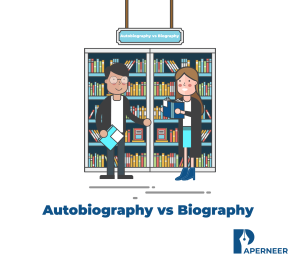Capstone Project – A Complete Guide A capstone project is sometimes the...
Read MoreNotice: Function Elementor\Controls_Manager::add_control_to_stack was called incorrectly. Cannot redeclare control with same name "eael_image_masking_upload_pro_message". Please see Debugging in WordPress for more information. (This message was added in version 1.0.0.) in /home/marcalis/paperneer.com/wp-includes/functions.php on line 6121
Qualitative vs. Quantitative-Research

Research is the cornerstone of information creation; however, selecting the proper qualitative or quantitative method can be discouraging. Each approach has distinctive strengths, which make it appropriate for various objectives. This journal can remove the essence of Qualitative vs. Quantitative Research, exploring their distinctions, methodologies, and applications. By the end, you’ll need a transparent understanding of that approach that aligns with your analysis wants.
In this blog brings you:
What is Qualitative Research?
Qualitative analysis explores and understands human experiences, behaviors, and social phenomena. It prioritizes depth over breadth, typically seeking answers to “how” or “why” queries.
Characteristics:
- Subjective and informative.
- Data was collected through interviews, focus teams, or observations.
- Emphasis on context and which means.
Applications:
It is ideal for exploring advanced social problems, cultural phenomena, or individual experiences, such as understanding how patients understand an attention intervention.
What is Quantitative Research?
Quantitative analysis, on the other hand, depends on numerical information and applied math analysis to clarify patterns and check hypotheses. It addresses “what,” “when,” or “how much” queries.
Characteristics:
- Objective and measurable.
- Data was collected via surveys, experiments, or existing datasets.
- Results are bestowed through graphs, charts, or applied math tables.
Applications:
Commonly employed in natural sciences, economics, and large-scale social studies, like decisive the effectiveness of a selling strategy supported client feedback scores.
Key Differences between Qualitative and Quantitative Research
Aspect |
Qualitative | Quantitative |
Nature of Data | Non-numerical, descriptive | Numerical, statistical |
Approach | Subjective, exploratory | Objective, confirmatory |
Purpose | To explore and understand | To test and measure |
Data Collection | Open-ended methods like interviews | Structured tools like surveys |
Analysis | Thematic and narrative | Statistical and computational |
Researchers will confirm the most appropriate technique for their objectives by dividing these parts.
When to Choose Qualitative Research or Quantitative Research
When to Choose Qualitative Research
Qualitative analysis is ideal once your study aims to:
- Explore unknown topics or phenomena.
- Understand people’s emotions, motivations, or experiences.
- Develop theories or hypotheses for future quantitative studies.
Example: investigate why bound communities adopt renewable energy quicker than others.
When to Choose Quantitative Research
- Quantitative strategies are ideal once you want to.
- Validate a theory or hypothesis.
- Compare variables or trends across populations.
- Produce results that will be generalized.
Example: Analyzing the correlation between physical activity levels and educational performance in students.
Pros and Cons of Qualitative Research and Quantitative Research
Pros and Cons of Qualitative Research
Qualitative analysis is appropriate for a few sorts of analysis but not for others. Here, a square measures a number of its professionals and cons.
Pros:
- In-Depth Exploration: Analysis through qualitative methods offers a deep and nuanced understanding of complex human experiences, behaviors, and phenomena. It allows researchers to delve into the “why” and “how” behind these aspects, uncovering valuable insights.
- Contextual Understanding: Analysis focused on qualitative methods is ideal for understanding the context in which phenomena occur. It takes into account social, cultural, and environmental factors, offering a comprehensive and holistic perspective.
- Flexibility: Qualitative strategies square measure versatile and adaptive, permitting researchers to regulate their approach throughout the study to capture rising themes and sudden insights.
- Participant Perspectives: This type of approach appreciates and welcomes the responses and opinions of the enrolled individuals, making it possible to collect many diverse and natural views.
- Rich Data: Qualitative information usually embodies careful narratives, quotes, and descriptions, which may be compelling and illuminating for readers.
Cons:
- Limited Generalizability: Findings from qualitative research are context-specific and may not be generalized to larger populations. The use of small, non-random samples can limit the applicability of the results.
- Subjectivity and Bias: The interpretation of qualitative information is subjective and may introduce bias, each from researchers and participants. Guaranteeing rigor and sound judgment is difficult.
- Resource-Intensive: Conducting qualitative analysis requires extensive effort and significant resources for data collection, transcription, and interpretation.
- Difficulty in Replication: Because of its discourse and subjective nature, replicating qualitative studies is difficult, which may affect the responsibility of findings.
Pros and Cons of Quantitative Analysis
Similar to qualitative analysis, quantitative strategies have their limitations and blessings. Here, a square measure of the number of professionals and the cons of quantitative analysis is used.
Pros:
- Allows the research worker to measure and interpret the collected information.
- The research worker maintains an objective stance regarding the findings of the analysis study.
- Explores the relationship between independent and dependent variables.
- Tests hypotheses through experiments.
- Measures data using statistical principles, ensuring reliability.
Cons:
- It utterly ignores the context of the analysis study or experiment.
- It cannot study ideas in natural settings.
- The timeline, complexity, and price of analysis square measure inflated to urge correct results.
Can You Combine Both?
Absolutely! This mixed-methods analysis project combines the depth of qualitative knowledge with the exactness of quantitative insights.
Advantages:
Provides a lot of comprehensive understanding.
Validates findings by mistreatment of multiple views.
Example: A study on geographical point satisfaction would possibly mix worker interviews (qualitative) with survey knowledge on job retention rates (quantitative).
Challenges of Qualitative Research or Quantitative Research
Challenges of Qualitative Research
- Time-intensive data collection and analysis.
- Requires skilled interpretation to avoid bias.
- Limited generalizability due to small sample sizes.
Challenges of Quantitative Research
- May oversimplify complex human behaviors.
- It can need more contextual depth.
Tips for Effective Research
- Define Your Objective: Clarify whether or not your study seeks to explore or live.
- Select the correct tools: select strategies that align with your analysis goals.
- Stay Ethical: acquire consent and guarantee participant confidentiality.
- Use Software: use tools like Vivo for qualitative and SPSS for measuring.
- Seek Peer Feedback: Enhance the validity and reliability of your findings.
Common Mistakes to Avoid
Overgeneralization: presumptuous qualitative findings apply to broader populations.
- Data Misinterpretation: Misunderstandings in applied mathematics lead to quantitative studies.
- Neglecting Context: Ignoring the nuances that qualitative analysis provides.
Conclusion
When discussing Qualitative vs. Quantitative Research, neither methodology is superior. Instead, their worth lies in their application to specific analysis desires. It excels at providing depth through qualitative analysis, context, and a nuanced understanding of human experiences, making it indispensable for exploring advanced social phenomena or generating new theories. On the contrary, quantitative analysis promotes the precision of results, there is accountability, and the results can be applied to larger populations; thus, it suits the testing of hypotheses and characteristic patterns.
Researchers will make knowledgeable selections tailored to their study objectives by understanding their variations, strengths, and limitations. Moreover, combining each method during a mixed-methods approach typically provides a holistic perspective, investing in the strengths of each to overcome their weaknesses. This comprehensive approach enhances the credibility of analysis findings and broadens their sensible applications. Mastering these approaches empowers researchers to contribute significant insights, fostering innovation and progress in several fields.
Say goodbye to Mistakes in Term Papers
Avoid Errors in Term Papers Writing a theme may be a vital tutorial task that needs careful designing and...
Read MoreUnraveling the Stories: Autobiography vs Biography
Autobiography vs Biography Understanding the excellence between autobiography and biography is crucial for...
Read More




